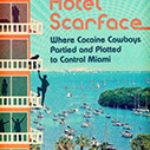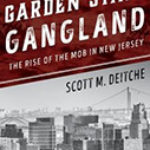Race And The Politics Of Deception: The Making Of An American City

Author: Christopher Mele
Publisher: New York: New York University Press, 2017. 208p.
Reviewer: Frederick T. Martens | March 2018
Every now and again, an inquiry into the politics of vice and corruption is published by those whose interests seldom coincide with the seminal research of criminologists and political scientists who have devoted their careers to such endeavors. Christopher Mele joins such scholars as John Gardiner (1967), who detailed vice and corruption in the fictional city of Wincanton, Pennsylvania; William Chambliss (1988) who exposed the machinations of corruption and the rackets in Seattle, Washington; and Gary Potter (1994) who provided a compelling picture of wide-scale corruption in another fictional region in Pennsylvania— Morrisburg—to name just a few, who have courageously pursued these nefarious alliances.
Race and the Politics of Deception unmasks the brutal, insidious, and predatory politics of a political machine that raped and plundered the City of Chester, Pennsylvania. Notably, Mele dispenses with the need to use fictitious names to expose a city, a county, a state that permitted and continues to facilitate its residents suffering under a system of defacto apartheid. He names names, some of which are the most revered patrons of corporate boards in America.
Investigating corruption in Chester in the late 1980’s, it was not long before the Pennsylvania Crime Commission came under a scathing attack by the county’s district attorney. A routine response—“no evidence was produced that could be used to prosecute anyone” — was the district attorney’s lame answer to the Commission’s lengthy and damning inquiry (Simmons, 1988). This was a patent retort that had been used previously by a special prosecutor, who also denied the similar 1973 findings of the Commission (p. 119).
Mele’s book paints a compelling picture of the Republican political “machine” that dominated local, county and state politics, to wit: “through the course of the 1970’s and 1980’s the associations comprised of local black and white politicians; the administrations of police, courts, social welfare, and housing; and the local branches of organized crime and gambling and narcotics syndicates were laid bare, transforming Chester into a frontier town of crime, vice and official corruption and its residents into hostages to costly schemes endorsed by parasitic urban politics” (p.117).
This “machine” can trace it roots back to the turn of the century and before, when the late John J. McClure “took over as political boss from his father in 1907 and oversaw the machine’s operations until his death in 1965…. Overseeing and profiting from Chester’s hybrid mix of industry and vice was the city’s Republican political machine,” Mele contends (p.19). McClure, who went on to become a State Senator, had gained control of the wholesale liquor business in Chester and Delaware County, using it as a patronage system to, among other things, trade favors between judges and tavern owners.
Mele’s research is rich and substantive. He describes with specificity how the white Republican machine co-opted and duped black political “front-men.” “Black operatives were the political front-men on display and seemingly in control of the everyday operations of saloons, brothels, gambling joints, and flophouses, leaving white political leaders to profit outside the public eye” (p.23). This symbiotic arrangement was certainly not unique to Chester. For example, Francis Ianni’s research into Paterson, New Jersey rackets saw a similar pattern emerge (Ianni, 1973).
The alliances between legitimate businessmen and their corporate interests with the Republican political “machine” were emblematic of this kind of symbiotic relationship. Naming some of the most revered industrialists, such as the “fiercely anti-union Pew Family…Baldwin Locomotive, Delaware River Steel, Atlantic Steel Castings, Delaware County National Bank, Westinghouse, and the Philadelphia Electric Company, McClure benefitted from their corporate support” of Delaware County’s legendary corrupt Republican Party (p. 35).
Jobs were parceled out to those faithful party members, further insinuating the Republican Party into McClure’s “legal” as well as illegal endeavors. This one party control of both the underworld and over-world proved so pervasive and insidious that a state judge referred to McClure as the “Stalin of Delaware County’s Political Politburo—a monumental liar…so cold to the finer things of life [that] certainly no one could discover, even with a microscope, the milk of human kindness in him” (McLarnon, 2003, p.15).
“From time to time anti-vice social reform candidates surfaced to battle county and local corruption and to unseat elected officials who openly participated in and benefited from the machine-sponsored vice trade,” according to Mele (p.20). Nonetheless, the system prevailed as it so often does, proving itself to be impervious to reform efforts to this very day.
Mele’s research in many respects just adds another piece to the expanding mosaic of organized crime research — particularly that which addresses the predatory nature of criminal monopolies and what occurs when they are left unattended. “As the machine decentralized and party discipline evaporated, the organization of Chester politics took on a more parasitic and extractive character….Corruption involved large sums of money and the abuse of power at high levels of municipal administration…the bail kickback operation was systematic…[the] city was awash in a number of sanctioned illegal activities, including gambling, prostitution, narcotics, loansharking, official bribery, kickback, and payoffs…the police provided immunity from arrest for numbers writers and fended off competition by selectively arresting other non-sanctioned numbers writers” (pp. 117-118).
The author discusses the functional value of organized crime, particularly with respect to the numbers rackets and the monies that were generated: “They used the profits to purchase corner stores, warehouses, restaurants, bars, and other small businesses…to serve as fronts for the expanding numbers racket and for payoffs to police and high level city officials” (p. 119).
For those criminologists who are interested in the tortured and twisted role of organized crime in urban politics, Mele’s research represents a classic case study of the “theft of a city.” He has demonstrated how business, politics and crime are seamlessly integrated into the body politic, making them often indistinguishable from one another. Indeed, Gardiner’s research in Wincanton found an identical situation, one which led Gardiner to conclude, “corruption can perform the valuable function of permitting the continued existence of society. Instead of a direct confrontation between the norm and the fact, corrupt enforcement of the laws can permit quiet fulfillment of both sets of values, e.g., through a territorial arrangement where ‘good neighborhoods’ are kept free of gambling and prostitution while other areas of the city…. are ‘wide open’” (Gardiner, 1967, p.79).
As demonstrated by this book, urban ethnography, when undertaken with the care and skill that Mele brings to the subject matter, can provide a window into the darkest corners of urban decay. That organized crime is often seen as only supplying “the goods and services” that a small segment of society desires clearly misrepresents a more accurate telling. Organized crime is in the business of ensuring its exclusivity, its total control of the markets. It is, as the noted economist Thomas Schelling contended, monopoly crime (Gardiner, 1967). Mele’s insights and anecdotes clearly and convincingly bear this out.
Sources Cited
Chambliss, William J. 1988. On The Take: From Petty Crooks to
Presidents. Bloomington, Indiana: Indiana University Press.
Gardiner. John A. and David J. Olson. 1967 “Wincanton: The Politics of Corruption.” Task Force Report: Organized Crime. Washington, D.C.: U.S. Government Printing Office. Pp. 61-79.
Ianni, Francis A.J. 1974. Black Mafia: Ethnic Succession and Organized Crime. New York: Simon and Schuster.
McLarnon, John Morrisson III. 2003. Ruling Suburbia: John J. McClure and the Republican Machine in Delaware County, Pennsylvania. Wilmington, Delaware: University of Delaware.
Potter, Gary W. 1994. Criminal Organizations: Vice, Racketeering and Politics in an American City. Illinois: Waveland Press.
Schelling, Thomas C. 1967. “Economic Analysis and Organized Crime.” Task Force Report: Organized Crime. Washington, D.C.: U.S. Government Printing Office. Pp. 114-126
Simmons, Rose. 1988. “A Dispute Over Crime in Chester.” The Philadelphia Inquirer. March 9th.
Frederick T. Martens is the former Executive Director of the Pennsylvania Crime Commission. He was a former President of IASOC. He has investigated organized crime and corruption throughout Pennsylvania, including in Chester, Pennsylvania.


